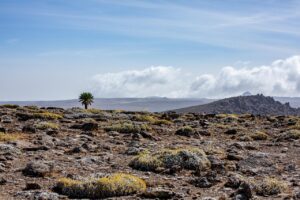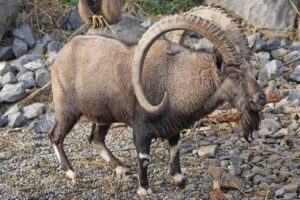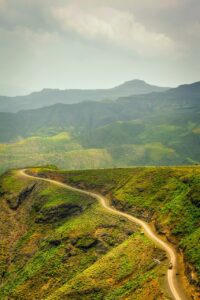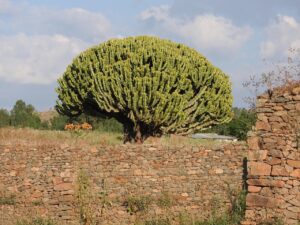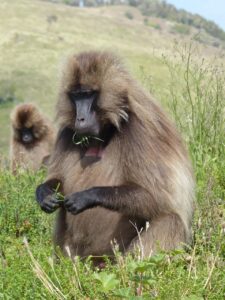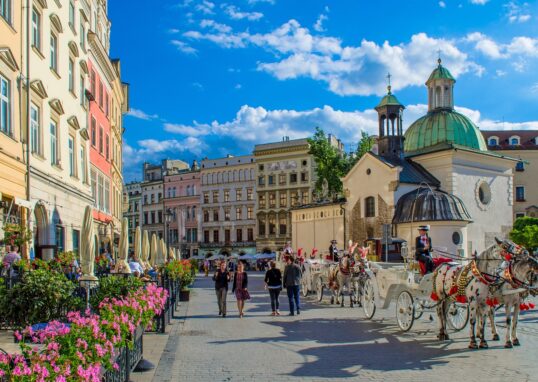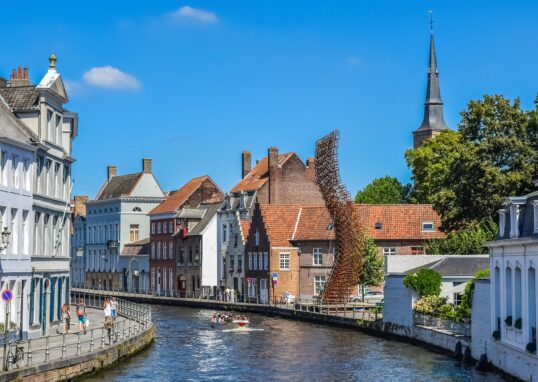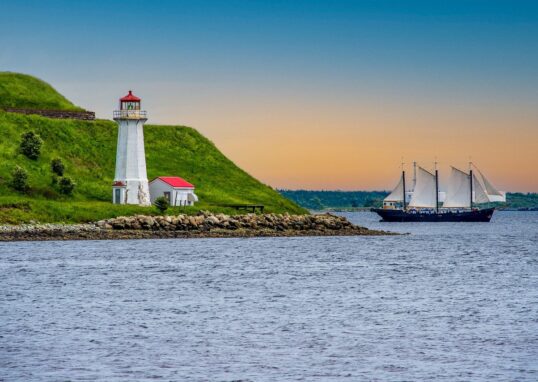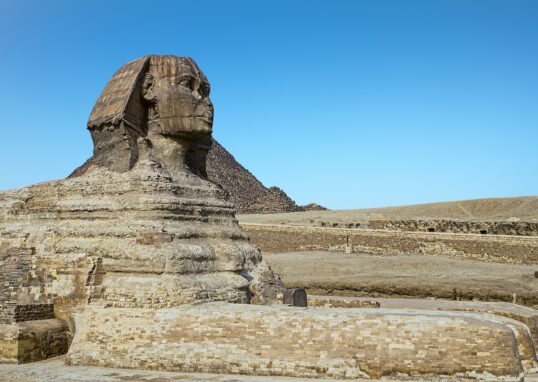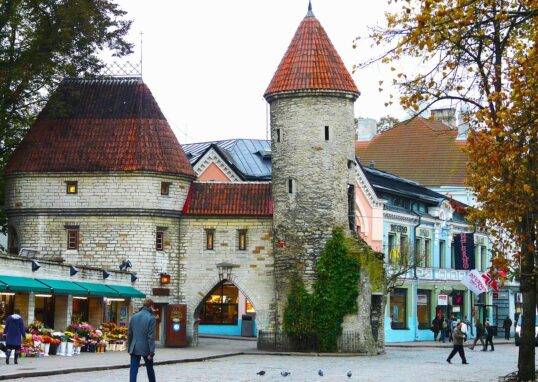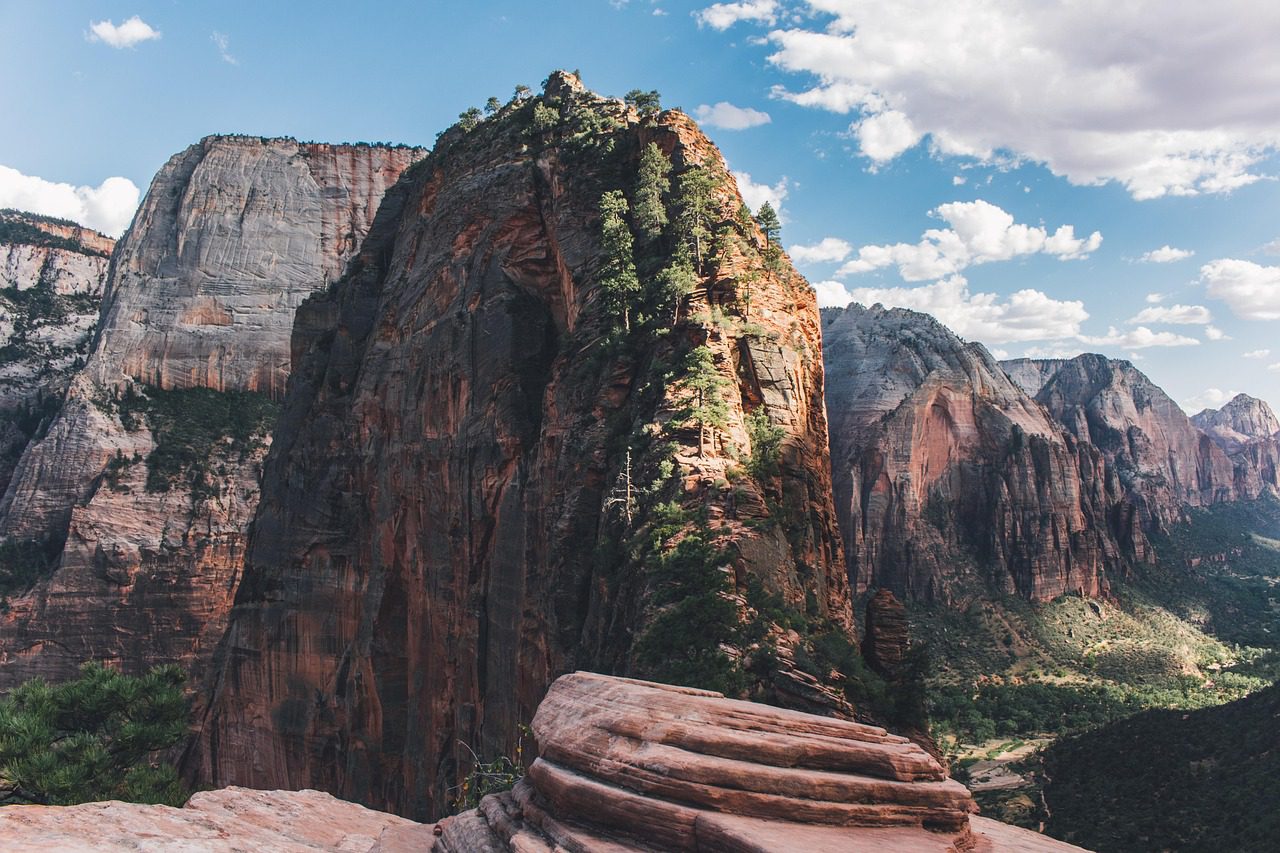
Bale Mountains National Park, Ethiopia
Bale Mountains National Park lies in the Oromia Region of Ethiopia, about 400 kilometers south of the nation’s capital, Addis Ababa. The park lies within the Bale-Arsi massif of the Ethiopian Highlands and contains some of the country’s highest peaks. The Tullu Dimtu, the country’s second-highest point, is an impressive 4,377 meters above sea level. It was established in 1970 to guarantee the preservation of the unique mountain habitat and threatened animals living in the region. Presently, it is among the most frequented spots for nature lovers, mountaineers, and researchers as well. UNESCO has considered it a Biosphere Reserve because of its unparalleled density of biodiversity and ecologic value.
Geography and Landscape
Bale Mountains are a place of contrast. The park’s landscape consists of broad plateaus, mountains, volcanic hills, rivers, and deep gorges. The landscape varies significantly from one zone to another.
The Northern Grasslands
The northern region of the park consists primarily of grasslands and open plains. The region is suitable for grazing and supports various animal species like mountain nyala and warthogs.
The Central Harenna Forest
South of it is the dense Harenna Forest, which is one of the biggest remaining natural forests in Ethiopia. The forest is dense with giant trees, mosses, and ferns. Mist typically clings to the canopy, making it enigmatic and mystical-looking.
Rivers and Waterfalls
Several rivers start from the Bale Mountains, including the Web, Shaya, and Shebelle Rivers. These rivers provide water to most of southeastern Ethiopia and even surrounding Somalia. You may also view stunning waterfalls, such as the Fincha Habera Waterfall, cascading down into a steep gorge that is adorned with vegetation.
Climate and Best Time to Visit
Weather in Bale Mountains National Park is gentle and cool. The temperature varies depending on altitude. The Sanetti Plateau is typically cold, especially at night, while the Harenna Forest is mild and humid.
Best Time to Visit
Peak time to visit is between November and March during the dry season. In this period, roads and trails are easier to handle, and landscapes are at their best. The lushness of April-October’s wet season can be pleasant, but it renders trekking quite challenging as tracks become muddy.
Flora – The Green Heart of Ethiopia
Bale Mountains National Park is famous for its incredible flora. It has more than 1,600 plant species, and some of them are uniquely endemic to Ethiopia, found elsewhere on Earth.
Afro-Alpine Vegetation
At a higher elevation, you can observe Afro-alpine flora such as giant lobelias, everlasting flowers, and helichrysum. These flowers are adapted to cold winds.
Harenna Forest
There is the Harenna Forest in the southern part of the park, with massive Podocarpus, bamboo, and wild coffee trees.
Locals harvest the wild coffee beans in those forests for centuries now.
Grasslands and Shrubs
The valleys and low slopes comprise shrubby and grassland areas covered in multicolored wildflowers, perfect for grazing birds and animals.
Fauna – Wildlife Paradise
Bale Mountains National Park is one of the most important wildlife reserves in Africa. It serves as a sanctuary for some endemic as well as endangered species.
Ethiopian Wolf
The park is best known as the home of the Ethiopian wolf, the world’s rarest canid. They are less than 500 in number and most of them live here. The wolves are reddish-colored and hunt small rodents on the Sanetti Plateau.
Mountain Nyala
Another celebrity resident is the mountain nyala, a large and stately antelope found only in Ethiopia. You can see them grazing at forest edges or grasslands.
Bale Monkey
The Bale monkey is a resident of the Harenna Forest and they feed mainly on bamboo. This primate is found only in the Bale region.
Birds
Bird watchers will love Bale Mountains as a paradise. Over 280 bird species, including Rouget’s rail, blue-winged goose, and Abyssinian catbird, inhabit the park. Migratory birds also throng the park, adding to its diversity.
Other Animals
Other mammals found in the area include giant molerats, menelik’s bushbucks, leopards, hyenas, and colobus monkeys.
🏞️ Things to Do in Bale Mountains National Park – A Detailed Guide
Bale Mountains National Park is one of Ethiopia’s most diverse and serene destinations. Around every bend in the park lies something lovely to discover — from mountain ridges to forest paths, from animals that are seldom seen to mist-shrouded waterfalls. If you adore hiking, nature, wildlife, or culture, something special awaits you here. These are the top activities and things to do at Bale Mountains National Park, explained in vivid detail so that you may better imagine the actual magic of this highland paradise.
Trekking and Hiking Adventures
Trekking is the most popular activity in Bale Mountains National Park. The varied landscape of the park — mountains, plateaus, and forests — is ideal for every kind of hiker.
Trekking Routes
There are several trekking routes from which travelers can choose. Each of them offers something unique to visit.
Dinsho to Sodota Trail:
It is one of the most scenic trails. It begins from park headquarters in Dinsho and passes through meadows of mountain nyala and warthogs. The trail moves towards Sodota, offering far-stretching views of the Gaysay Valley and small rivers.
Along the way, travelers can camp by peaceful streams and watch herds of wildlife grazing in the soft morning light.
Sodota to Rafu Trail:
The trail traverses the Web Valley, which is famous for its wildlife and open country. Travelers can spot Ethiopian wolves creeping up on giant mole-rats quite often. The scenery here is like a scene from a natural movie — wide, peaceful, and virgin.
Rafu to Sanetti Plateau:
This leg of the trip takes you further into the Afro-alpine. You will experience views that look like the surface of another planet — full of giant lobelias, rocks, and mist. The air gets thinner, and the horizon disappears into the distance.
Rita to Harenna Forest Route
For nature and wildlife enthusiasts, Harenna Forest trail is not to be forgotten. It begins near Rira Village and leads you deep into the dense green forest. You may hear birds singing, monkeys calling out, and leaves rustling as the mist floats among giant trees.
Explore the Harenna Forest
Harenna Forest is likely the most beautiful and mysterious part of Bale Mountains National Park. It along the southern slope and covers more than 400 square kilometers.
Magical Landscape
The forest is shaded by moss trees, giant ferns, and pale mist floating between the branches. Sunlight filters through leaves to create golden spots on the ground. It is like the background of a fairy tale. The air has a fresh scent, and you hear the soft hum of insects and birds.
Wildlife Encounters
There are colobus monkeys, baboons, and forest pigs in the forest. If your luck permits, you may catch glimpses of leopards or African golden wolves gliding in the shadows.
Wild Coffee and Honey
The Harenna Forest is also renowned for wild coffee. The local Oromo tribes have been gathering coffee from these forests for generations. You can walk along natural coffee groves and even sip freshly brewed forest coffee. Beekeeping is also an old practice here. Local farmers make organic honey from wild flowers and forest herbs. You can see honey being extracted and enjoy the sweet product.
Drive Across the Sanetti Plateau
The Sanetti Plateau is probably the most dramatic landscape in Ethiopia. The plateau sits at an altitude of some 4,000 meters, and as such, it is one of the highest plateaus in Africa.
Scenic Drive
There is a road running across the plateau from Goba to Rira, as far as Tullu Dimtu, Ethiopia’s second-highest point. The drive takes in open plateaux, rocky ridges, and small mountain lakes. The view is great. It has tree-sized giant lobelias with silver-colored leaves sparkling in the sun.
Roadside Wildlife
Ethiopian wolves, large mole-rats, and various species of birds can be spotted alongside the road. The road itself is half the thrill, as it passes through mist, sun, and abrupt snowfall. The tourists normally pass through vantage points to take photos or enjoy a picnic in the most beautiful scenery imaginable.
Visit Tullu Dimtu – The Roof of Ethiopia
With an elevation of 4,377 meters, Tullu Dimtu is Ethiopia’s second-highest mountain. It is a rewarding ascent for any tourist.
How to Reach
You may drive or walk from the Sanetti Plateau to access Tullu Dimtu. The road is gently sloped at the top, and trekkers have short walks to adjacent vantage points.
The View from the Top
At the top, you have an unlimited view of mountains, valleys, and clouds. The air is cold and thinner, but the view is unforgettable. On a clear day, you can see the lowlands stretch far out to the horizon. It’s as if you stand at the world’s edge.
Waterfalls and Rivers
There is an abundance of water in Bale Mountains National Park. There are numerous rivers that begin here and run towards the lowlands.
Fincha Habera Waterfall
The most stunning location is the Fincha Habera Waterfall in the Web Valley. Water cascades into a deep valley bordered with green cliffs and wild flowers. The site is perfect for a picnic, photography, or simply sitting back and listening to the gentle rumble of running water.
Web and Shaya Rivers
The Web River and the Shaya River are vital sources of water for both humans and animals. Visitors can make use of the riverbanks to find peaceful spots to relax or view nature.
Horseback Riding
Should you be an adventurous person but not up to a faster pace, horseback riding is a suitable way of exploring the Bale Mountains. Local guides provide well-tamed horses for short or extended rides. You ride through valleys, villages, and into the forests. A ride across open country with the mountains in the distance gives a feeling of pure freedom.
Camping and Eco-Lodges
Spend a night inside Bale Mountains National Park for an experience that you will always remember.
Camping
There are quite a few campsites inside the park, including Dinsho, Sodota, Rafu, and Rira. They all have simple facilities, clean water, and scenic natural landscapes. With camping, you are able to witness sunrise and sunset in dead silence, only broken by birds and distant animal calls.
Eco-Lodges
For comfort-seekers, one choice is eco-lodges like Bale Mountain Lodge near Rira. They offer magnificent lodging built in harmony with nature. The lodge is solar powered, offers local foods, and offers guided nature walks. At night, you can sit around the fire, hear the sounds of the forest, and gaze at clear stars above.
Photography and Landscape Viewing
The parkscapes are the most photographer-friendly in Africa. There’s something beautiful in every direction — misty mountains, golden plains, and sun-kissed forest. Photographers love to shoot the unique contrasts between the cold plateau and the green forest below. The light in the early morning and late afternoon is perfect for creating magical scenes for landscape photographers. Wildlife photographers are even able to capture the elusive species like the Ethiopian wolf or mountain nyala in their natural habitat.
Cultural Heritage and Local Communities
The park is occupied by the Oromo people, who have made it their home for centuries. Oromo people are renowned for their diverse cultural heritage, hospitality, and intimate connection with nature. Cultivation, pastoralism, and forest products are the livelihood of most communities. Visitors can experience Oromo culture through attending local festivals, eating local food like injera and wat, or buying local handmade craft from local markets.
Conservation Efforts
Bale Mountains National Park is under the threat of deforestation, overgrazing, and climate change. But the local and international institutions are making every possible effort to preserve it. Programs such as the Bale Eco-Region Sustainable Management Program attempt to strike a balance between preservation and development by people. Rangers, scientists, and residents are working together to preserve the park’s beauty for their future generations.
How to Get There
One can reach the park by road from Addis Ababa through Shashamane and Dodola. It is an 8 to 10 hour drive. There are domestic flights to Robe Airport, close to the park. One can access guides and park rangers at the Dinsho headquarters to assist in permits, lodges, and trekking arrangements.
Surrounding Places and Nearby Attractions
The Bale Mountains region is surrounded by amazing locations that add to your experience. All the attractions surrounding the area have something unique, from historical locations to natural features.
Dinsho Town
Dinsho is the main entrance to Bale Mountains National Park. It is a small town and administrative center of the park. Visitors get to stay, arrange guided tours, and buy supplies. The Dinsho Lodge, which was built in the 1970s, offers charming old-fashioned accommodation. Close by, you can see the Gaysay Grasslands, which are inhabited by herds of mountain nyala, warthogs, and reedbucks. The grasslands have a yellow color during the dry season and green color during the rainy season, creating a stunning view.
Harenna Forest Villages
To the south of the park lies vast Harenna Forest, dotted with small villages such as Rira and Katcha. The villages are famous for wild coffee picking and natural honey. You can walk on coffee farms and taste organic honey straight from the comb. Both tourists and visitors can also learn about forest beekeeping and agroecology farming, which keep the forest intact while providing income to local residents.
Sof Omar Caves
Approximately 120 kilometers east of the park are the Sof Omar Caves, one of Africa’s largest cave systems. The Weyib River flows through the caves and is eroding tunnels and chambers in the limestone rock. Visitors can walk along series of kilometers of passageways lined with stalactites and stalagmites. The caves are a religious and cultural site for the locals and are dedicated to Sheikh Sof Omar, a Muslim saint.
Goba Town
Goba Town is located on the edge of the Bale Mountains. It is a market town and provides accommodations, restaurants, and access to the Sanetti Plateau. Tourists drive up to Tullu Dimtu, the park’s highest point, from Goba. The Goba Market is a good opportunity to see local culture, buy fresh fruit, and encounter the Oromo people.
Robe Town
Some few kilometers from Goba town is Robe, another big town. It is a transport and commercial hub. Robe Airport has flights connecting the Bale region to Addis Ababa. Robe has some modern hotels, cafes, and cultural places where you can relax after trekking in the mountains.
Wabe Shebelle Gorge
More to the southeast of the park is the stunning Wabe Shebelle Gorge. Deep cliffs have been carved into the ground by the Shebelle River, which has created one of Ethiopia’s most striking gorges. The scenery from the top is magnificent, with twisting rivers and craggy cliffs stretching out to the horizon.
Dodola and Adaba Highlands
To the north of the park lie the Adaba and Dodola areas, famous for the community-managed trekking routes. You can trek or ride a horse from one mountain village to another, overnighting in locally owned eco-lodges.
Lake Shalla and Lake Abijatta
About 200 kilometers northwest of the Bale Mountains is the Abijatta-Shalla Lakes National Park. The two lakes are renowned for their birdlife, such as flamingos, pelicans, and storks. Bird watching, nature trails, and hot springs are enjoyed by tourists. The lakes are quiet and soothing sites, thus making them the best stopover to or from Bale.
Arsi Mountains
To the north of Bale is Arsi Mountains, another lovely region of the Ethiopian Highlands. There are small villages, forests, and rivers here. You can have the experience of trekking trails, authentic Oromo villages, and local markets full of handmade crafts.
Awasa City
A few-hour drive from Bale Mountains, Awasa (Hawassa) is a lively city on the shores of Lake Awasa. The lake is famous for its fish market and boat cruises. Visitors can relax in lakeside hotels, look out for hippos, or enjoy Ethiopian coffee in cozy cafes.
Conclusion
The Bale Mountains National Park is not just a natural phenomenon but an unparalleled world of beauty, life, and culture. From the white-topped plateaus to the mist-shrouded forests, from the evasive wolves to birds with splashing colors, every part of the park is a story of the harmony of nature. The nearby communities and scenery, ranging from Sof Omar Caves to Harenna Forest, add more to the trip. Whether your love is trekking, wild life, or culture, Bale Mountains National Park in Ethiopia will give you an experience that you cannot forget. It is not only a jewel of Ethiopia but also the way of the world that human beings and nature can coexist hand in hand.

